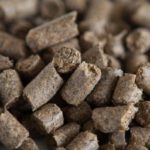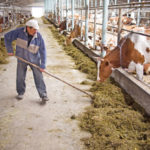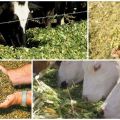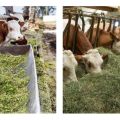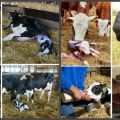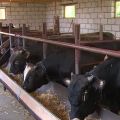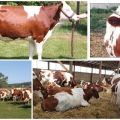What is brewer grains, the pros and cons of using as feed for cattle
In the production of beer wort, a by-product with a high nutritional value remains - grain grains. Brewers do not dispose of it, but sell it to livestock farms. Brewer grains, used as feed for cattle, are a rich source of proteins, when regularly present in the diet, it normalizes digestion and metabolism, increases milk yield of dairy cows and slaughter productivity of beef bulls.
What is brewer grains?
Grain is a protein concentrate that remains after the production of beer wort. It is supplied to livestock breeders in silage and granulated form. Fresh product is a liquid that can be stored for no longer than 4 days. Further, oxidation processes begin in it, useful substances are replaced by toxic ones. Therefore, for use in animal husbandry, the spent grain must be dried or ensiled.
From 3.5 tons of raw beer mass, approximately 1 ton of dry grains is obtained. It is sold in a crumbly form or pressed into granules.
Beer pellet is a valuable protein feed for cattle, 100 g contains:
- 78 g of water;
- 4 g protein;
- 2 g fat;
- 0.3 g of sugars;
- 3.5 g fiber;
- 0.8 g of ash particles;
- 11 g of nitrogen-free organic substances;
- 0.1 g phosphorus;
- 0.07 g calcium.
The nutritional value of 1 kg of silage grains corresponds to a similar portion of compound feed for dairy cows with a protein content of 25% and an energy yield for lactation of 6.7 MJ. Regular inclusion of pellet in the diet in the amount of 10-12 kg per individual per day saves 2.5 kg of concentrated feed per day.
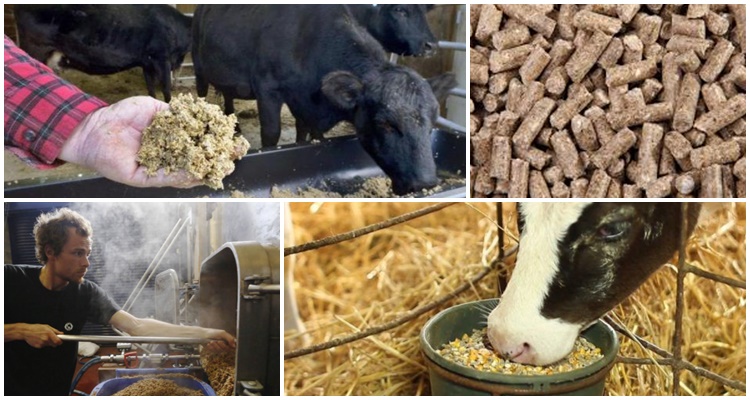
The product, rich in proteins and fiber, has a positive effect on the stomach of cattle. With regular inclusion in the diet, it normalizes the rumen, prevents diarrhea in cows.
The nutritional value of the silage product is shown in the table.
| Index | Value per kg dry matter |
| exchange energy, MJ | 11,4 |
| lactation energy, MJ | 6,7 |
| crude protein, g | 260 |
| protein undigested in the rumen, g | 160 |
| assimilated protein, g | 230 |
| nitrogen balance of the rumen, g | +5 |
Pros and cons
Instructions for use for cows
The norm of consumption of beer product by a dairy cow is 5-10 kg per day, fattened bull and young animals - 10-15 kg. A portion of beer silage for cattle is selected individually, taking into account the qualitative composition of the main feed and the milk productivity of animals. With an increase in the percentage of grains in the cattle ration, the total daily portion of feed is reduced. With the regular inclusion of a beer product in the diet of beef cows, the meat acquires a pleasant aroma and juicy taste.

Recommended portions of silage grains for cattle, taking into account milk production, are shown in the table.
| Milk productivity of cattle, l | Daily portion of beer silage, kg |
| 15-20 | 2,5-3 |
| 20-30 | 4-5 |
| over 30 | 6-6,5 |
An approximate grass-silage ration of cattle, including brewer's grains:
- hay - 1 kg;
- legume-cereal silage - 15 kg;
- silage corn - 20 kg;
- pellet - 10 kg;
- rapeseed meal - 1.5 kg.
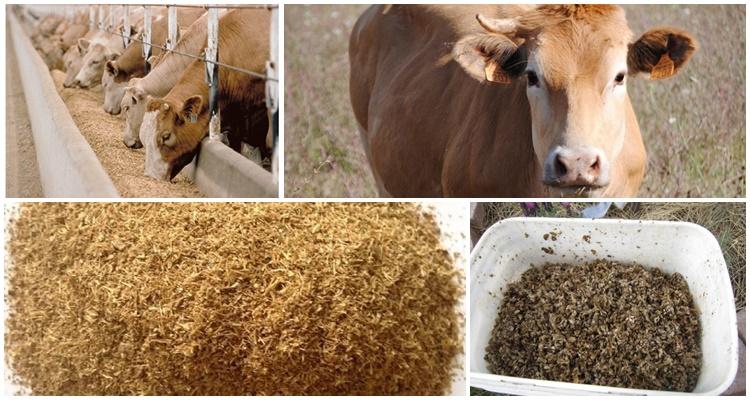
Precautions
Improper use of beer silage can lead to serious digestive problems and the death of cattle. Fresh product quickly grows moldy, causing poisoning in cows that have eaten it. Therefore, in breweries, they try to sell waste within 24 hours, and farmers rush to feed or ensile them.
Excessive inclusion of grain in the diet of cattle threatens to malfunction of the stomach, obesity, and leads to reproductive problems.
Storage rules
Fresh beer waste contains 20-25% dry matter, has a temperature of 55-65 ° C. With such indicators, the grain must be silted up within 3 days. Silage of beer waste is more difficult than corn, as it contains less moisture and sugars. The use of bio-preservatives is useless, since lactic acid bacteria do not actively multiply at temperatures up to 65 ° C. The only acceptable and uncomplicated method of silage is to put it in plastic sleeves. If the use of sleeves is not possible, then you can put the spent grain on a concrete surface, cover it with a film to create anaerobic conditions, secure the structure with sandbags or other weights.
The silage heap must not be in contact with the ground. Ash particles contained in the ground disrupt fermentation processes.
It is advisable not to make silage heaps higher than 1.5 m. Silage lasts 3 days. After this time, the farmer can already depressurize the sleeve. But feeding with silage from one sleeve must not be extended for more than 3 days.
It is best to leave the silo sealed for a month. During this time, the core of the silage heap will cool down to outside temperature, and the growth of molds will slow down. As a result, the product will be usable for cattle longer. The sealed silo sleeves can be stored for at least six months.

